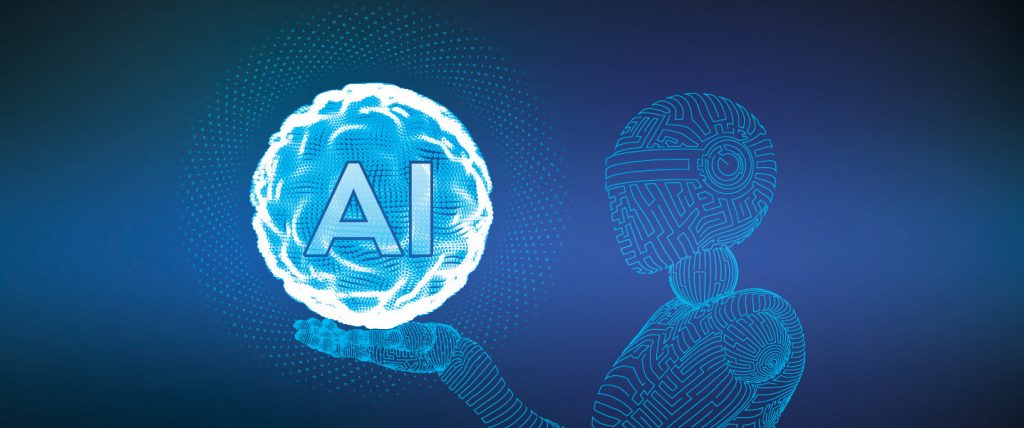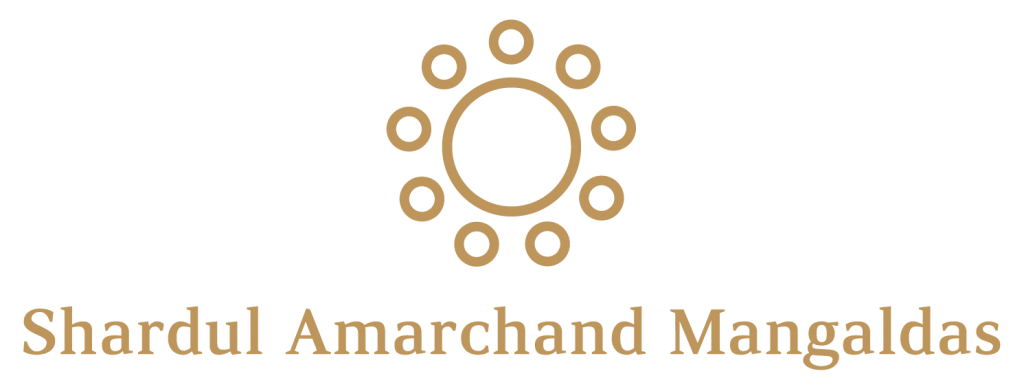Insights
Navigating AI-Generated art and copyright law
April 4, 2025As artificial intelligence continues to disrupt the creative landscape, legal questions surrounding AI-generated art and its implications for copyright law have become increasingly pertinent. In an exclusive interview with BW Legal World, J.V. Abhay, Partner at Shardul Amarchand Mangaldas & Co., answers to the queries related to intellectual property rights and AI-generated content.

Does AI-generated art that mimics a distinct artistic style, like Studio Ghibli’s, raise intellectual property concerns?
While establishing copyright ownership over a particular artistic style, as opposed to an artistic work, may be challenging, AI-generated work that closely resembles a specific art style may raise legal questions regarding potential copyright infringement. The Indian Copyright Act, 1957 (“Copyright Act”), governs copyright law in India, providing protection for original literary, dramatic, musical, and artistic works, along with cinematographic films and sound recordings. If not licensed, the AI tools most likely use data, which is freely accessible, to train the model. However, the process of extracting information from websites or databases, may often lead to the unauthorized copying and storing of copyrighted content, potentially resulting in copyright infringement. It may, however, be contended that, in the absence of statutory protection for ideas under the intellectual property framework, mimicking an artistic style alone does not constitute infringement. In case AI-generated works are presented in a manner likely to cause consumer confusion about the source, official affiliation or endorsement, this could give rise to a claim for passing off. A claim for unauthorized commercial use of a distinctive style so as to usurp the source of the art work can also be made. This will be in the nature of a claim for unfair competition.
Read More+
Can an artistic style be legally protected under copyright or trademark law, or is it considered too abstract?
Under the Copyright Act, while an artistic style itself may not be said to be protected, the original artistic work created in that style by an artist is certainly protected. Thus, while an underlying idea (the artistic style) cannot be protected, the specific expression of such idea is protectable under Indian law. Additionally, trade mark laws are intended to protect elements or distinctive identifiers such as brand names, logos etc. associated with an artistic style. Such protection does not extend to an artistic style itself. However, protection to the artistic style may be sought on the basis of the style being distinctive and that any AI generated artwork mimicking the style amounts to usurping the rights of the studio with which the artwork is identified.
How do existing copyright laws apply to AI-generated content that closely resembles the work of renowned studios?
The current intellectual property legal framework can be applicable to AI-generated content that closely resembles the work of renowned studios, for instance when the content used by the AI developers to train the model has been used without permission or consent. In such cases, use of the materials could constitute copyright infringement, particularly if the resulting outputs closely resemble the protected works.
What legal recourse, if any, do studios like Ghibli have if AI-generated images replicate their signature aesthetic?
The legal recourse for studios like Ghibli will be to file a lawsuit before a Court and seek relief(s), including an injunction and damages. The Copyright Act also provides for filing of a criminal complaint. The absence of explicit copyright protection for artistic styles may make the potential infringement claims complicated, as copyright law traditionally safeguards the expression of an idea rather than the style itself. Consequently, studios may face legal challenges in holding AI developers liable solely for mimicking a distinct artistic style under copyright law. On the other hand, if AI models are trained on proprietary material without authorisation, the use of such materials could constitute copyright infringement, particularly if the resulting outputs closely resemble protected works. While it may be argued that training AI models does not involve “storage” of copyrighted materials, but rather involves breaking down copyrighted information into large strings of models or numbers, which the model then learns from, whether the output generated by AI is transformative in nature and/or not substantially similar to the copyrighted input used to train the AI model have to be determined on a case-by-case basis. The determination of liability may depend on factors such as the extent of reproduction, the transformative nature of the AI-generated content, and whether such use falls under exceptions like fair use or fair dealing, which vary by jurisdiction. This issue is presently pending before the Court in Delhi.
A case for passing off and unfair competition may be made out in case AI-generated works are presented in a manner likely to cause consumer confusion or be seen as an attempt to appropriate the source of the artwork.
Are there any precedents or legal cases that address AI-generated art infringing on established creative styles?
While there are multiple cases against developers training AI models on copyrighted literary work without the permission or consent of the owners, there is no reported precedent or case of AI-generated art infringing established creative styles in India.
Could AI models trained on copyrighted works without permission lead to potential legal battles in the future?
Such legal battles are already ongoing and multiple cases across various jurisdictions are pending adjudication. The case of ANI Media v Open AI, pending before the Delhi High Court is one such case. These cases address critical issues such as whether the unlicensed use of copyrighted content for AI training constitutes infringement, the applicability of fair use or similar exceptions, and the potential liability of AI developers and platforms. Courts are also examining the extent to which AI-generated outputs derived from such training datasets may be considered derivative works and whether copyright protections should be extended to AI-generated content. The outcomes of these cases are expected to establish significant legal precedents and guide the manner of use (if allowed) of copyrighted works to train AI models.
How do global jurisdictions differ in handling copyright claims over AI-generated content?
There have been some judicial observations in relation to AI-generated content. For example, the Beijing Internet Court in LI v. LIU, conferred copyright protection to an image created by AI. On the other hand, the Guangzhou Internet Court in Shanghai Character License Administrative Co., Ltd. v. AI Company, ruled that the AI-generated images partially or wholly copied the artistic expression of the right holder, violating his right to reproduction and adaptation. The Court held the Defendant liable for copyright infringement and ordered it to pay damages. In the Indian context, The Indian Copyright Office rejected the application for a work (painting) created using an AI tool called ‘RAGHAV’ in 2020. The United States Copyright Office has conferred protection only to the textual content and the arrangement of images and refused protection for the individual images contained within the graphic novel “Zarya of the Dawn”. Except the decision by the Beijing Internet Court, until now, it has consistently been observed in all jurisdictions that in the event AI is used as a tool to assist a human author, the human’s contribution can be considered as the “authorship” and the work is eligible for copyright protection on that account.
What measures can artists and studios take to safeguard their artistic identity from AI-driven replication?
Studios and artists may take varied measures to safeguard their artistic identity from replication by AI models. These measures include registration of the artwork; explicitly prohibiting AI training in licensing agreements, use Creative Commons for public works to restrict commercial and AI use; using technological measures such as use of anti-scraping tools and mask for the artistic style to confuse the AI model; blocking AI crawlers; and using strategic online practices such as selective sharing of artwork and monitoring and enforcing rights against misuse.
Is there a need for new regulations or updates to copyright laws to address the rise of AI-generated art?
The existing copyright law and regulations are sufficient to cover issues of infringement arising from AI generated art. However, these need to be interpreted in a manner so as to effectively address the issue of violation of rights of the right holders before ushering new regulations, or amending the current framework.
From a fair use perspective, how do courts typically assess AI’s role in recreating existing artistic styles?
The Copyright Act in India, provides for the “Fair Dealing” exception, as opposed to “Fair Use” under Section 52(1)(a). Unlike the broader and more flexible “fair use doctrine”, which exists in jurisdictions such as the United States where the courts determine fair-use on a case-to-case basis using a four-factor test (purpose, nature, amount, and effect on the market), Indian law limits fair dealing with respect to any work, except computer programs, to specific situations, which include (i) private or personal use, including research; (ii) criticism or review, whether of that work or of any other work; and (iii) the reporting of current events and current affairs, including the reporting of a lecture delivered in public. The storing of any work in any electronic medium outside these exceptions, unless it is transient or incidental storage of a work or performance purely in the technical process of electronic transmission to the public, is considered to constitute infringement of copyright. As mentioned above, there are no reported cases in India that address the issue of infringement of artistic styles by AI models.
This article was originally published in BW Legal World on 4 April 2025 Written by: J.V. Abhay, Partner. Click here for original article
Read Less-
Disclaimer
This is intended for general information purposes only. The views and opinions expressed in this article are those of the author/authors and does not necessarily reflect the views of the firm.


